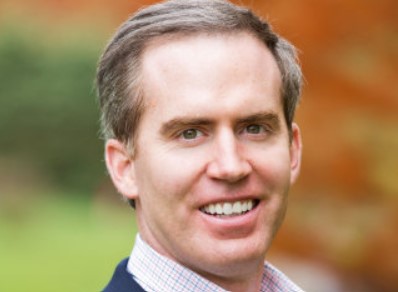Luca Paolini (Pictet Asset Management): “There Is a Permanent Loss of Economic Activity that Is Not Fully Priced in the Markets”
| For Meritxell Sedo | 0 Comentarios
According to Luca Paolini, Pictet Asset Management’s (Pictet AM) Chief Strategist, the investor’s renewed optimism in the past 6 weeks is based on three assumptions. The first one is that the COVID-19 pandemic has peaked, and it is now under control. As the lockdown measures are eased and the global economy is showing signs of recovery, the market has assumed the vaccine will be the next step to normalcy and this crisis will be a temporary one, only momentarily hitting corporate profitability.
“The narrative of the market is telling us that the pandemic has been a horrendous crisis, that is still bad, but it is getting better. On the economic side, data for the second quarter is expected to suffer one of the biggest declines in recent history, with 35-40% GDP decline and unemployment rate rising well above 20%. However, we have already learned from the Global Financial Crisis that the market does not trade on whether economic data is good or bad, but on whether expectations improve or worsen. Here, the market assumption is that the economy is recovering and that the worst is behind us”, explained Paolini.
The second assumption is that the fiscal and monetary policy stimulus will work, and if they do not; there will be more stimulus to support the economy. Meanwhile, the third assumption is that the tensions between China and the US are only rhetorical. Although there are several fronts in this dispute: the tech side, the blame game on the origin of the COVID-19 pandemic or Hong Kong, the markets are assuming these are “more barks than bites”, since there is a presidential election in the US in November this year, and an escalation of the conflict could influence the outcome.
These would be the assumptions made by the markets, but are they sensible? Are investors in a new multi-year bull market already? Although this is probably the deepest recession in living memory, global markets (measured by the MSCI All Country index as of May 26th) are down roughly 9% year to date. Some sectors are even in the positive terrain, like Information Technology and Healthcare, with returns year to date being 3.5% and 1.3%, respectively. By countries, China, the first one to be affected by the pandemic is the second-best equity market year to date, only after Switzerland. On the economic growth, Pictet AM is forecasting -3.6% in real GDP growth by the end of 2020, but by the end of 2021, this figure should have already rebounded up to a 6.3%.
“Our view is that growth will be probably normalized next year, but before we can return to a certain level of trend, economic activity will have to wait a couple of years to recover. In our opinion, there is a permanent loss of economic activity that is not fully priced in the markets”, claimed Paolini.
Real-time indicators for the main economies
During the pandemic, there has been a stronger focus on real-time indicators. Thanks to Google, Apple, and other Big Data providers, Pictet AM has been able to track the evolution of daily activity for the main economies. This has allowed them to monitor changes in mobility; getting to know whether people were getting back to work or they stayed at home.
“There has been a significant recovery in daily activity, which would have probably touched its trough by the end of March. But, at the same time, the level of this recovery is still moderate. China has almost come back to the level it was before the crisis started six months ago. And again, they are just at the same level, not higher. In the US and Japan, daily activity is still 15 points below its pre-crisis level, and Europe is close to 25 points below. It is important to keep in mind that the global economy has been in hibernation for a couple of months, and this alone means significantly lower income, earnings, and wages for the entire year. This will obviously have a substantial implication going forward”, commented Paolini.
Global fiscal stimulus to fight COVID-19 damage
Considering that developed economies are still far from recovering their previous level of daily activity, why have the markets been so optimistic? The main reason is the global fiscal stimulus, which now represents a 4.2% share of potential global GDP, well above the 2.4% reached in 2008 and 2009.
Both fiscal and monetary stimulus have fostered the recent rally among asset classes, but they have also provided a significant support for business and consumer confidence. In terms of monetary stimulus, the amount of equity that has been generated during this crisis is twice as big as the amount generated during the Global Financial Crisis.
However, the game changer here is the recovery fund being discussed by the European Union. So far, the fund could represent a 6% share of GDP, about 650 billion euros in a mix of grants and loans for the EU countries that have been hit the worst by the crisis. This recovery fund is still discussed for approval and will not significantly change the outlook for the EU economy, but it will change the degree of confidence from foreign investors and European citizens on the ability of the European Union to survive the crisis, specially for periphery countries.
“This is a giant step in the right direction, but as always in the European Union, there are 27 member countries on the table making it incredibly difficult to agree on anything. Therefore, I do not want to be excessively optimistic, but this could be a game changer”, said Paolini.
Asset class valuations
In terms of asset class valuations, the market has gone back to normal. Considering the historical percentiles for the last 20 years, this crisis has made the dispersion between asset valuations even larger that it was before. The US Equity market, which was already expensive before the pandemic, is now by far the most expensive market globally. Some sectors, like discretionary consumer, IT, or healthcare, that were already relatively expensive are also more expensive now. On the other hand, sectors that were cheaper are even getting cheaper.
However, valuations alone are not the reason to buy a risk asset in the portfolio. Investors should buy equity if they consider that the recession is over, that there is no risk of a second wave and that the fiscal and monetary stimulus in place are going to work. The key point here is whether people will be willing to spend once they get back to work. And, the same applies to companies, would they be willing to embark on significant investment spending in a phase where there is scarcity of cash, a high level of debt and much uncertainty about the recovery? According to Paolini’s opinion, it is quite probable that this is not going to happen.
Earnings Consensus
Before the crisis, the EPS (Earnings-Per-Share) expectations on the MSCI All Country Index for this year were around 10%. As for now, the growth consensus for the global EPS is around -17.4%. This is roughly a 30% cut in expectations year to date.
This consensus, which considers a drop of approximately minus 20% on earnings expectations, seems optimistic when compared to the fall in earnings during the Global Financial Crisis, which was approximately 40%. According to Paolini, the market is underestimating the long-term impact of the pandemic in terms of costs, as this crisis has not only reduced revenues, but also raised costs for companies.
“If you think about airline companies or restaurants, they are having to implement social distancing measures that are understandable but will represent an additional cost for their business. That´s why I think investors should expect more cuts in terms of earnings expectations”, explained Paolini.
Government bonds
Equity may seem risky. However, government bonds in developed markets do not seem to offer a good alternative to stock markets, as the real yields – once the inflation rate is subtracted- for their 10-year bonds are negative. This implies that investors are guaranteed to lose money if they invest in these types of bonds. The only exception is the case of the Italian bonds, which involve more risk due to the level of indebtedness of the country.
In emerging markets, some government bonds are offering better opportunities, like Indonesia, Brazil, Mexico, or Russia. But, here, investors need to be more selective as the coronavirus is now strongly hitting the Latin American region. In that sense, Emerging Asian assets may be better positioned, since this part of the world is almost out of the pandemic.
Conclusion
Now that there is some positive news on the pandemic side, markets have responded showing an overly optimistic behavior. Nevertheless, investors should consider being more cautious on risk assets in the short-term as the risk of a second leg down due to disappointment over the recovery is rising.
Therefore, in their multi-asset strategies, Pictet AM remains relatively cautious. They are overweight in gold, defensive equities, and US Treasuries. They are more positive on investment grade corporate bonds in developed markets, mainly because of the substantial support from central banks. However, they are less positive on Emerging Market assets. Additionally, Pictet AM is overweight in Swiss equities and francs.
In a medium to long-term horizon, there is a case to strategically favor equities over bonds. If inflation rebounds investors will probably have more protection investing in equities than in bonds, but there some potential long-term secondary effects that should be considered, like the increase of state interventionism and equity dilution, a lower pay-out to shareholders, de-globalization and Euro-area instability, and debt sustainability issues.
“There are still some big question marks for this rally. We want to wait at least for the dust to settle before making a more kind of aggressive move in terms of asset allocation”, concluded Paolini.
Important notes
This material is for distribution to professional investors only. However it is not intended for distribution to any person or entity who is a citizen or resident of any locality, state, country or other jurisdiction where such distribution, publication, or use would be contrary to law or regulation.
Information used in the preparation of this document is based upon sources believed to be reliable, but no representation or warranty is given as to the accuracy or completeness of those sources. Any opinion, estimate or forecast may be changed at any time without prior warning. Investors should read the prospectus or offering memorandum before investing in any Pictet managed funds. Tax treatment depends on the individual circumstances of each investor and may be subject to change in the future. Past performance is not a guide to future performance. The value of investments and the income from them can fall as well as rise and is not guaranteed. You may not get back the amount originally invested.
This document has been issued in Switzerland by Pictet Asset Management SA and in the rest of the world by Pictet Asset Management Limited, which is authorised and regulated by the Financial Conduct Authority, and may not be reproduced or distributed, either in part or in full, without their prior authorisation.









